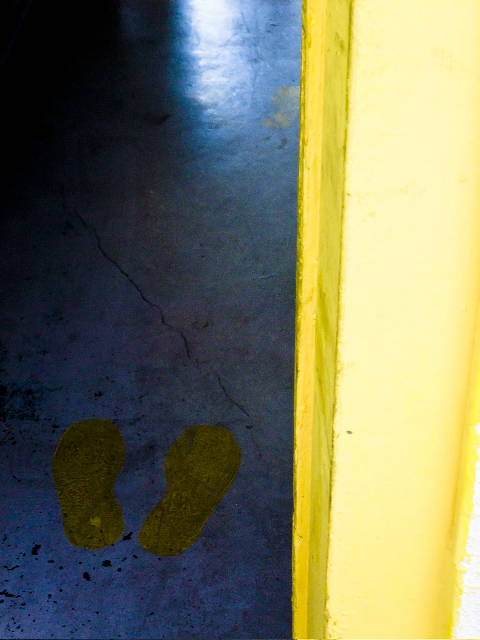 It’s 4:40 a.m. in Managua and I’m shivering. I’m waiting in the entryway of the place where I’m staying, waiting for someone to pick me up and take me to interview the country’s young leader, Daniel Ortega. All I’m told is to be ready to run.
It’s 4:40 a.m. in Managua and I’m shivering. I’m waiting in the entryway of the place where I’m staying, waiting for someone to pick me up and take me to interview the country’s young leader, Daniel Ortega. All I’m told is to be ready to run.
I’m wearing sneakers, t-shirt and shorts, and I have a small tape recorder, notebook and pen. Outside it’s dark and except for a few distant dog barks and rooster crows, very quiet.
At 5:04 a roofless military Jeep arrives to pick me up. I climb in, glad that it’s finally going to happen. After more than a week of asking for time with Ortega, I’m getting my hour with the man who’s at the moment defying Ronald Reagan and the Contras. Unfortunately, I’ll be doing the interview literally on the run.
The two armed soldiers–one beside me and the other in front–say nothing, but the driver tells me to hang on. As the Jeep moves forward, I grab a handhold at my side and focus on the dog in the headlights crossing the street. We bounce along more empty streets, through the city, and then go about five miles on a highway until we reach the rendezvous place, once a private golf resort now owned by the state.
We drive up on one of the fairways, where the young driver tells me to hop out. Now that the sky has brightened, I can see the serious faces of the soldiers. “Get ready,” one of them says. “Here he comes.”
I nod and jump down. I’m not cold anymore.
Just then another Jeep appears alongside us, and I see Harry, the photographer on assignment with me, sitting in the back. We trade good mornings and then suddenly Ortega jogs into view. He’s accompanied by seven big men in running sweats, all carrying Kalishnikovs. Next to these guys, the comandante, who’s wearing a shirt and shorts, looks small. He hurriedly shakes my hand, barely slowing his stride. “Let’s go,” he tells me in Spanish.
As we trot up an inclined fairway, behind the Jeep with Harry in the back, I ask him how often he jogs. I’m holding up the tape recorder so that it’s only a few feet from his face. The soldiers have moved to the sides or dropped back in order to be out of Harry’s photos.
“Whenever I can,” he says. “Sometimes every day. . . .”
“How far?”
“About four or five miles,” he answers. “You too, I see.” He seems pleased I can handle the pace.
“I try.”
I’m about to ask another question when Harry, who’s hunkered down facing us in the rear of the Jeep, starts yelling at me. He’s looking into one of his cameras and telling me to get out of his picture, to move away. He’s a cantankerous Scotsman and he’s cussing up a storm. We need pictures, so I veer to the right and into the weedy, tall grass, trying my best to keep up and not trip.
“Get out of there!” Ortega shouts, waving his arm for me to leave the rough. “Poisonous snakes!” All this is in Spanish, which Harry doesn’t understand.
I move out of the weeds and run back to Ortega. But before I can ask another question, Harry’s hollering at me again. So I return to the rough, thinking he’ll snap a few more shots and then I’ll be able to resume the questions.
But Ortega shouts at me again, warning of snakes. I run back onto the fairway, trying my best to stay out of Harry’s picture-taking.
Ortega waves me in closer. “Go ahead, ask questions,” he says, maybe enjoying the little tug of war with Harry.
Over the next hour or so we run up and down at least fifteen fairways. I’m near exhaustion, though still asking questions in breathless spurts. I see Ortega’s tiring too because his answers are getting shorter.
Before the end, I’ve had it with Harry. I tell him where he can stick his camera, and I stay close to Ortega, squeezing in as many questions as I can.
When we stop running, we’re both soaked. So are the men with the Kalishnikovs. But once we all catch our breath, we’re all smiles, relaxed and not so stiff and military.
Harry’s come up with another photo possibility: Ortega with a Mets baseball cap and tee-shirt, which we’d brought with us from New York.
Ortega’s a major league baseball fan. He immediately sheds his wet shirt and slips on the new one. Then he puts on the cap.
Harry asks if he can take photos of him seated cross-legged in the rough, head and shoulders above the weeds.
“Very well,” Ortega says and eagerly moves to where Harry indicates. I look at the soldiers. They’re amused and a few are chuckling and making attaboy comments. No one seems to be worried about the snakes.
—
Ron Arias‘ work has appeared in numerous magazines and newspapers for almost fifty years. “Snakes” is from a collection of non-fiction still in progress, titled Hunting Hemingway And Other Stories Behind Stories. He has published four non-fiction books, including Moving Target: A Memoir of Pursuit,, several dozen fiction stories, and one novel, The Road to Tamazunchale, which was nominated in 1976 for a National Book Award. He is currently working on a novel that interlaces the saga of a 16th-century British slave in New Spain and present-day American captives of drug cartel operatives in northern Mexico.
Photo by Tricia Louvar
